Imagine scaling the sheer walls of a mountain, gripping onto metal rungs and wires, while admiring the stunning scenery of the Alps, the Mediterranean, or the Canadian Rockies. This is the thrill of Via Ferrata, or “Iron Way”, a type of climbing that originated in the First World War as a way for soldiers to traverse the rugged terrain of the Dolomites. Today, Via Ferrata routes are popular among adventurous climbers who seek a challenge and a unique perspective on some of the most beautiful landscapes in the world.
The Dolomites are a spectacular mountain range in northeastern Italy that form part of the Southern Limestone Alps. They are renowned for their stunning beauty, diverse geology, and rich culture. But perhaps the most distinctive feature of the Dolomites is their abundance of via ferrata routes. Via ferrata, which means “iron path” in Italian, is a method of climbing that involves following a fixed cable along a rock face, using metal rungs, pegs, bridges, and ladders to aid the ascent. Via ferrata originated in the Dolomites during World War I, when the Italian and Austro-Hungarian armies built these routes to facilitate the movement of troops and supplies during high-altitude warfare. Today, via ferrata is a popular recreational activity that allows climbers of all levels to access some of the most spectacular and challenging parts of the mountains, without requiring extensive equipment or technical skills.
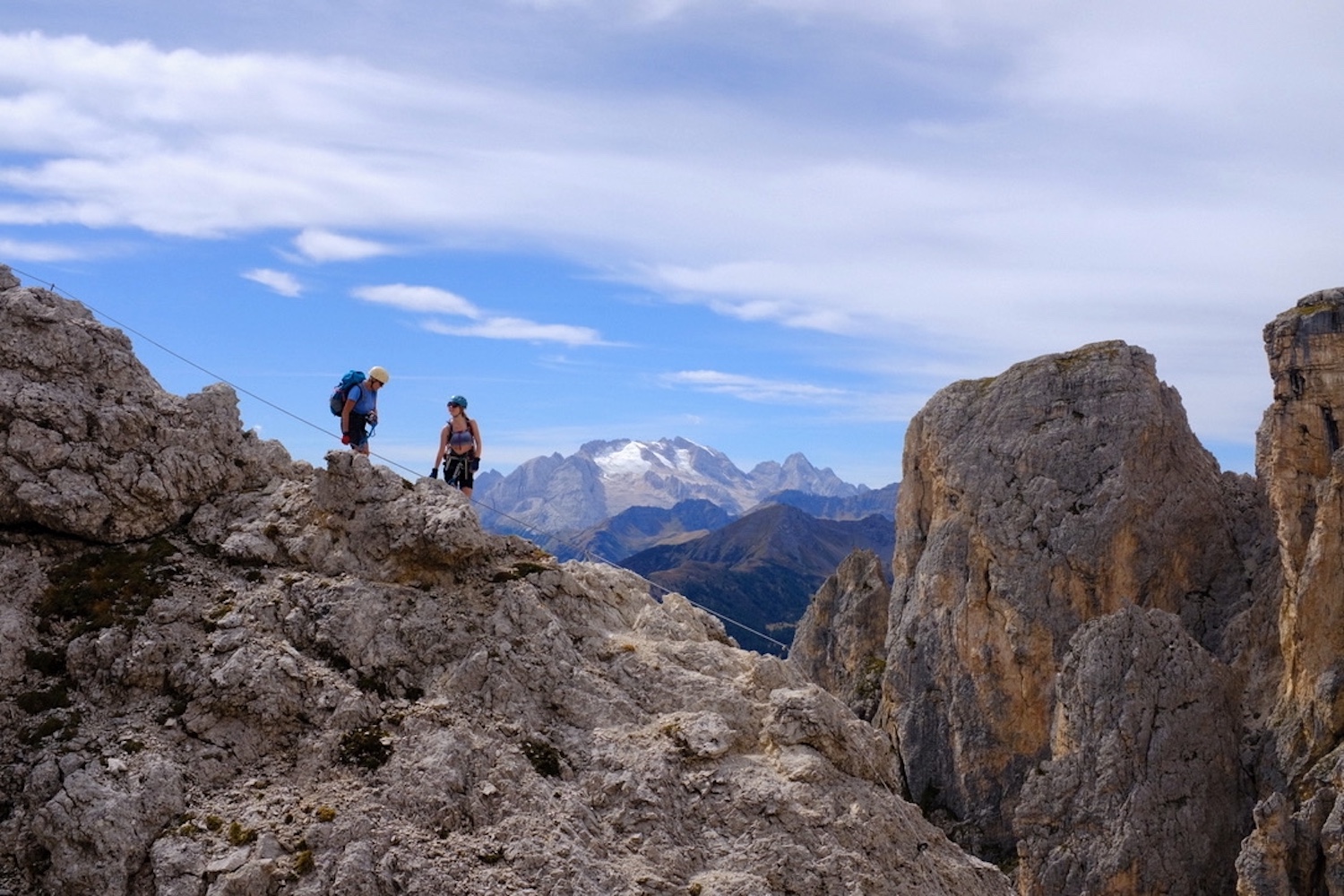
Via ferrata is perhaps the ultimate way to experience the Dolomites as it combines the thrill of exposure, the satisfaction of achievement, and the awe of witnessing incredible panoramic views. The Dolomites offer hundreds of via ferrata routes, ranging from easy to extreme, and covering various terrains and styles. Some of the most famous and iconic routes include the Tre Cime di Lavaredo, the Marmolada, the Civetta, and the Brenta Dolomites. Whether you are looking for a leisurely stroll along a scenic ridge, a steep climb up a vertical wall, or a traverse across a dizzying gorge, you will find a via ferrata route that suits your taste and ability.
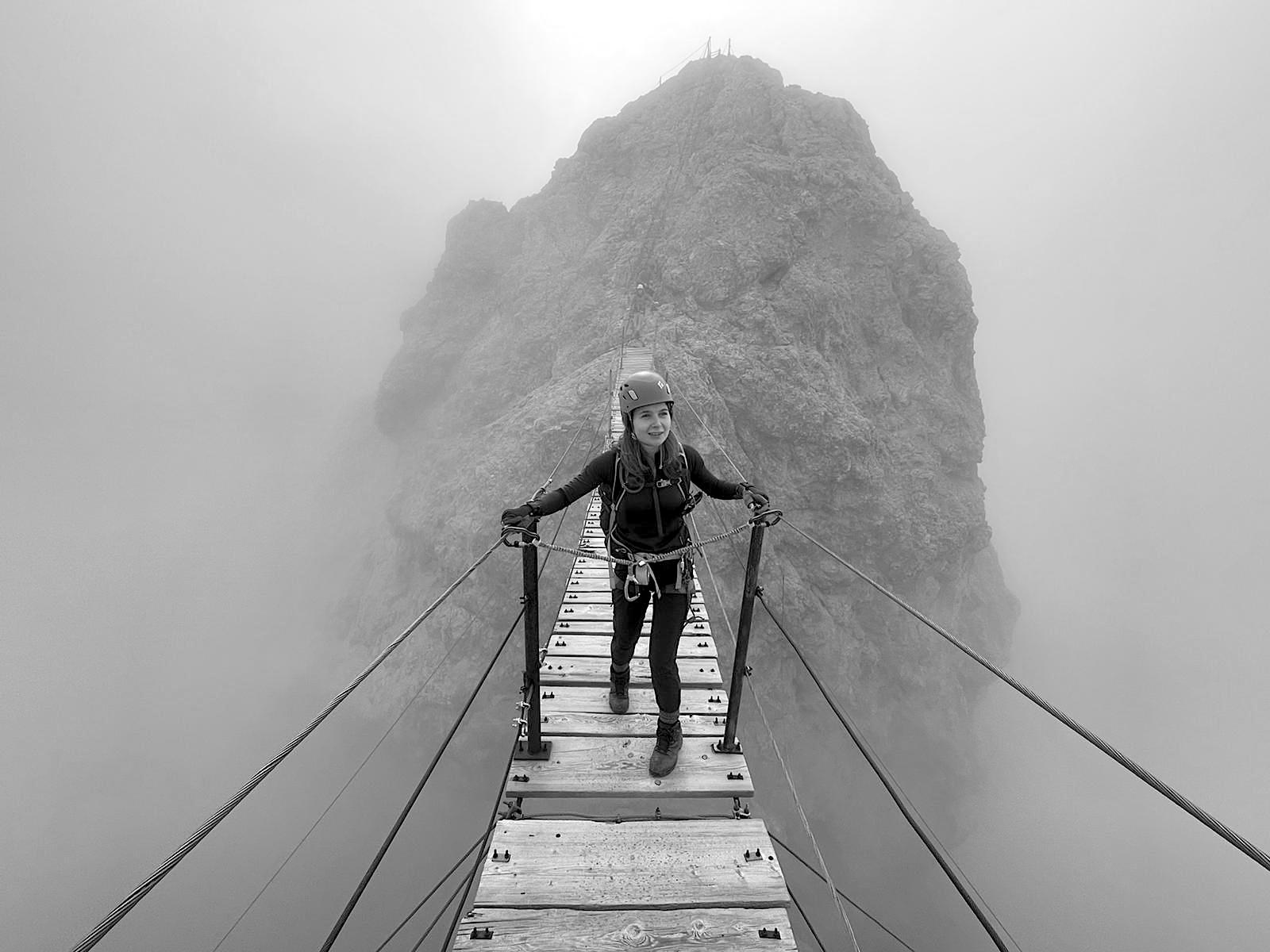
Crossing the Bridge featured in the film Cliffhanger at almost 3000m. The rickety wooden planks didn’t fill us with confidence, but clipping the shiny new cables kept us feeling safe before the storm closed in on Ivano Dibona Via Ferrata in the Dolomites.
Via ferrata is not only a fun and exciting way to explore the Dolomites, it’s also a safe and relatively reliable one. The routes are well-maintained and marked, and the cables provide that constant feeling of security and guidance that perhaps the inexperienced might appreciate.. As long as you have a helmet, a harness, and a via ferrata kit (which consists of two carabiners and a shock absorber), you are basically ready to go. You can also hire a guide or join a group if you want to learn more about the history, culture, and nature of the Dolomites. Via ferrata is the ultimate adventure for anyone who loves the mountains and wants to discover the Dolomites in a unique and unforgettable way. It is also very hard to get lost in this Mecca for via ferrata, where every route offers a new challenge and a new perspective.
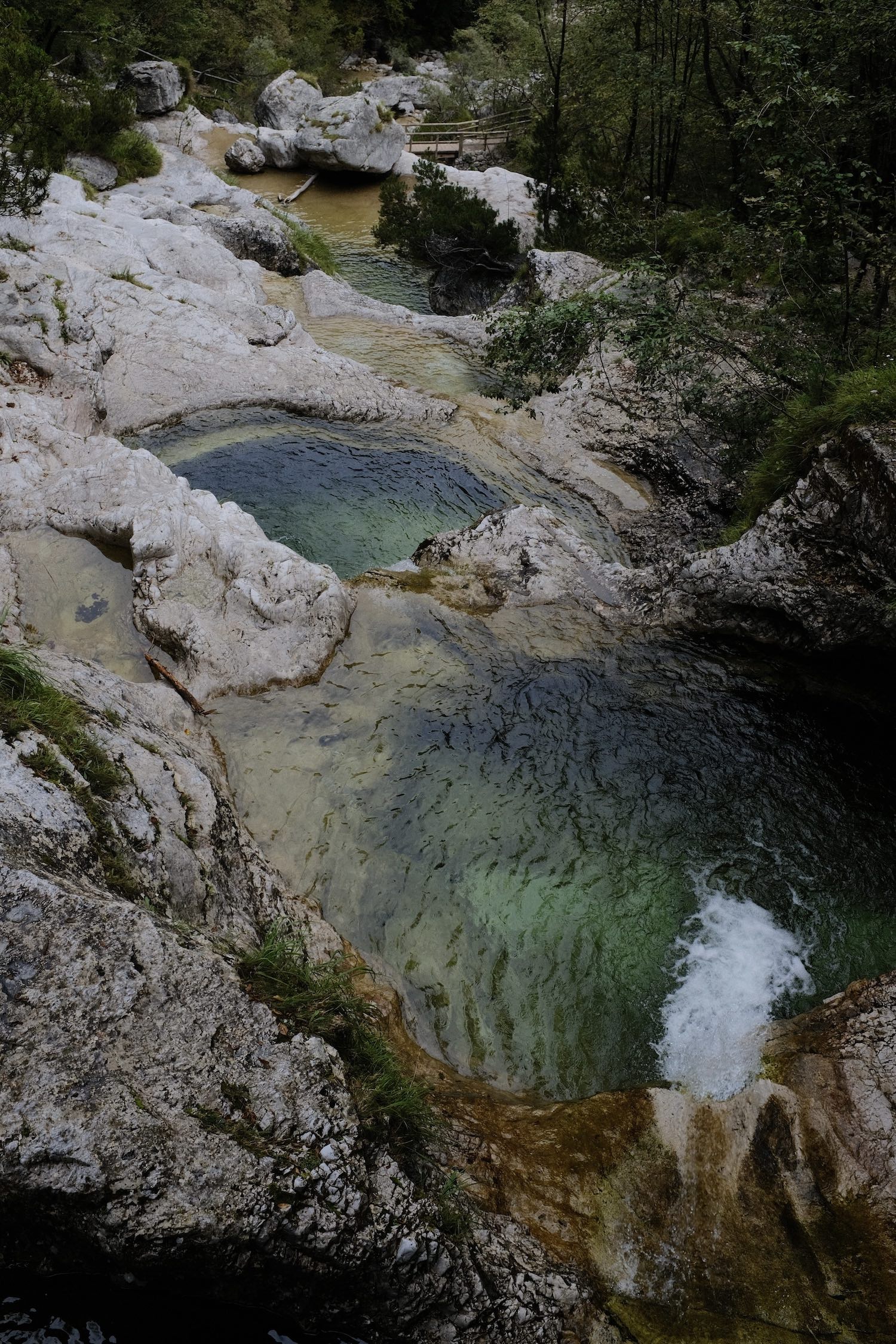
On our drive to Venice at the foot of the Dolomites, we stopped to admire these stunning waterfalls. A low-level walk was a welcome respite for my aching bones after several days of high mountain Via Ferrata. Not feeling the constant need to move on in case of storms in the afternoon gave us more time to appreciate the innate beauty of the area.
Despite spending significant time exploring the Dolomites we did manage to find time to see Venice on the final day of the trip before heading home. It certainly felt worlds apart from the massive exposure and unpredictable weather of the mountains. Suddenly I had to switch back to the mundane dangers of city life, keeping my valuables close and not being bumped into by armies of tourists lost in their cameras and selfie sticks. Of course, Venice is stunning, but I suggest visiting at night or during a time of the season when it’s not full of people.
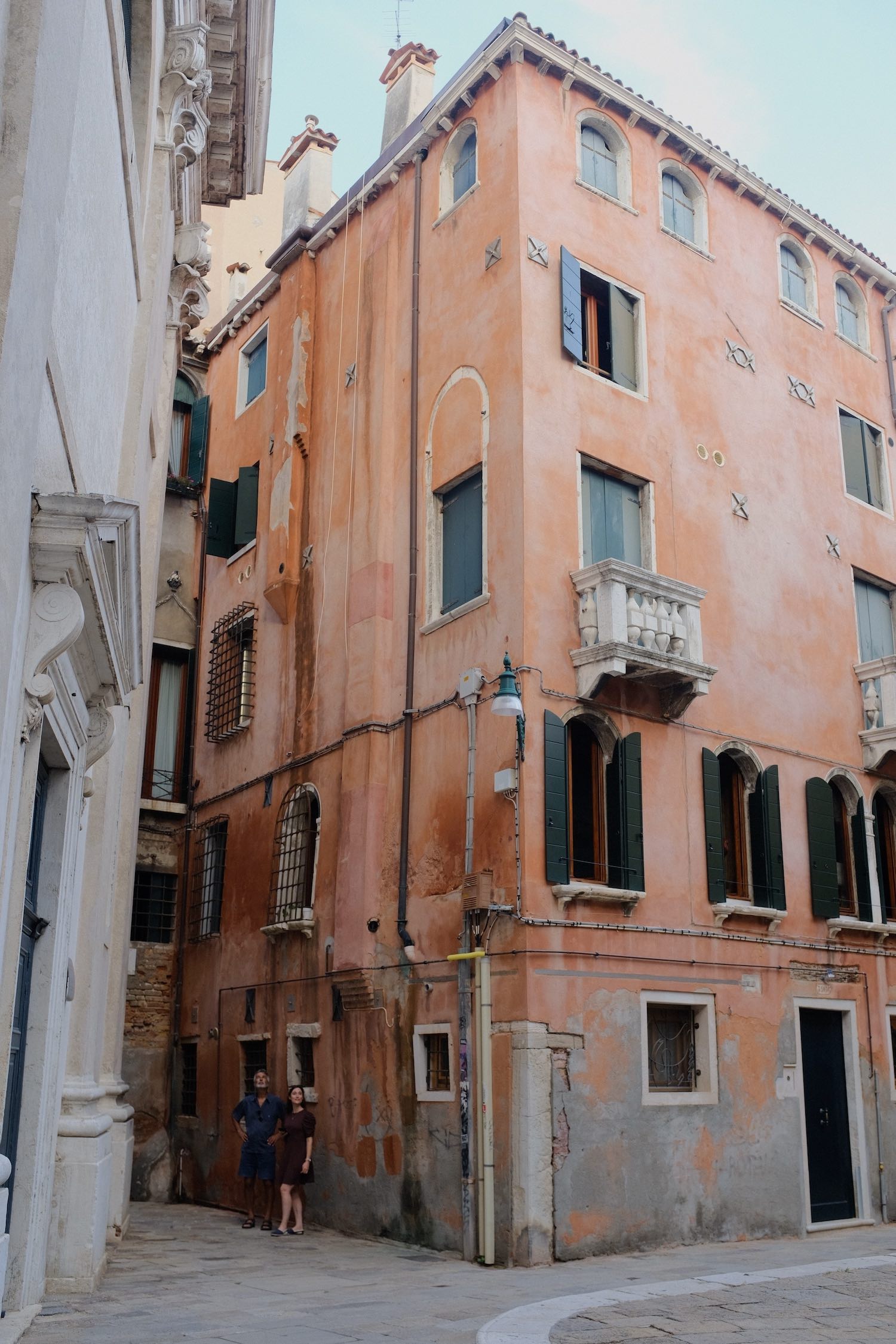
If you’re looking for a unique and unforgettable climbing destination, Kalymnos should be on your hit list. It’s a small island in Greece that boasts some of the best sport climbing in the world. With over 3000 bolted routes, ranging from easy to extreme, you’ll never run out of challenges. The rock is limestone, with amazing features such as tufas, stalactites, pockets, and caves. The scenery is stunning, with turquoise waters, sandy beaches, and rugged mountains abound.
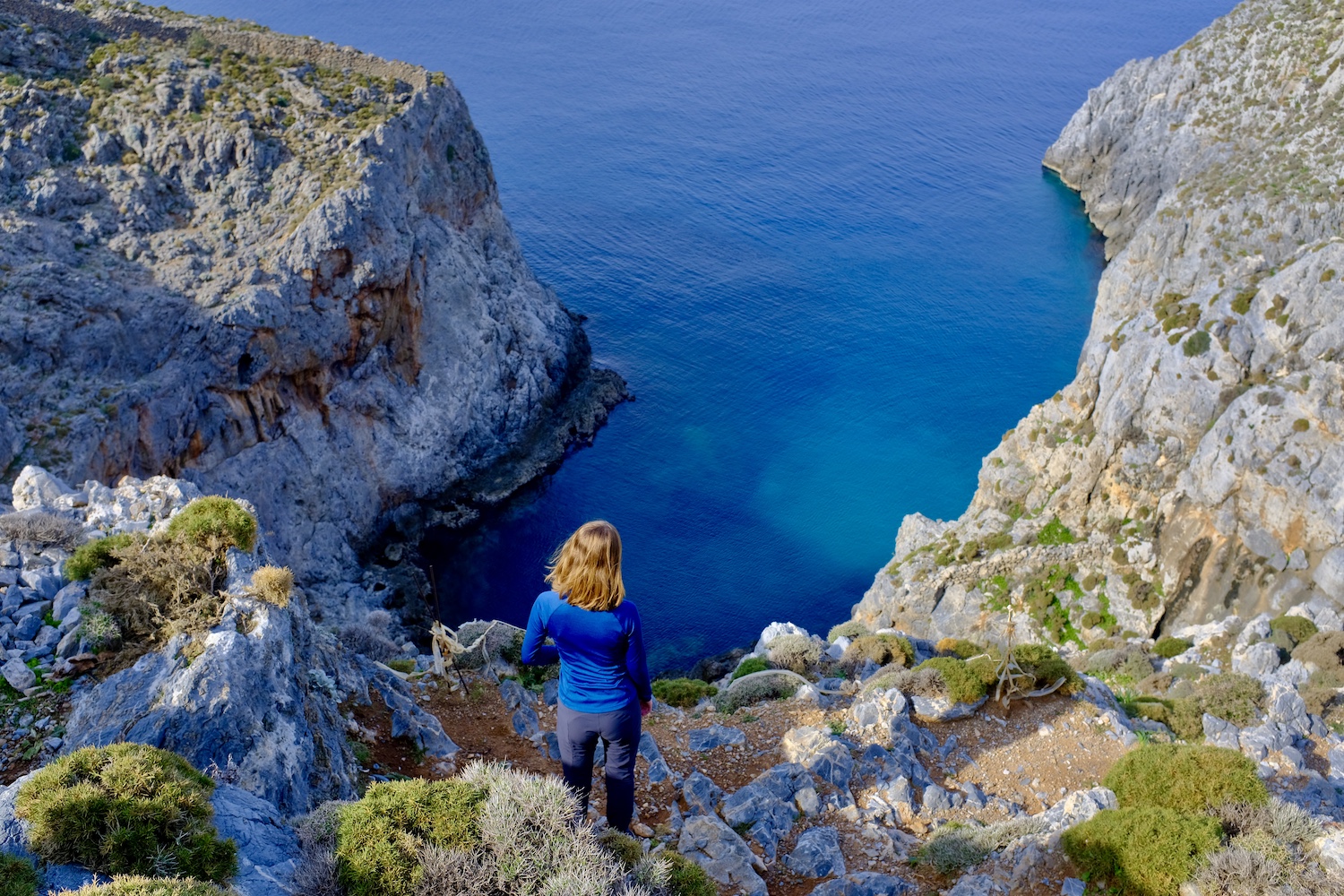
Kalymnos is not only a climber’s paradise, but a place where you can experience a sense of authentic Greek culture and hospitality. The locals are genuinely friendly and helpful, and very keen to share their delicious seafood, cheese, honey, and wine. You can also explore the charming villages, ancient monasteries and the sponge diving history of the island.
Life in the small towns goes by at very much its own pace. As we expired the narrow streets It was clear to see that stress and rushing aren’t concepts the locals give much consideration to. We were overtaken on the winding coastal roads one day by two men on a scooter. Neither were sporting helmets, preferring flip flops and sun-bleached shorts, casually enjoying a cigarette, harpoon on the back and a fresh catch in hand. That pretty much sums up the way of life on Kalymnos I think.
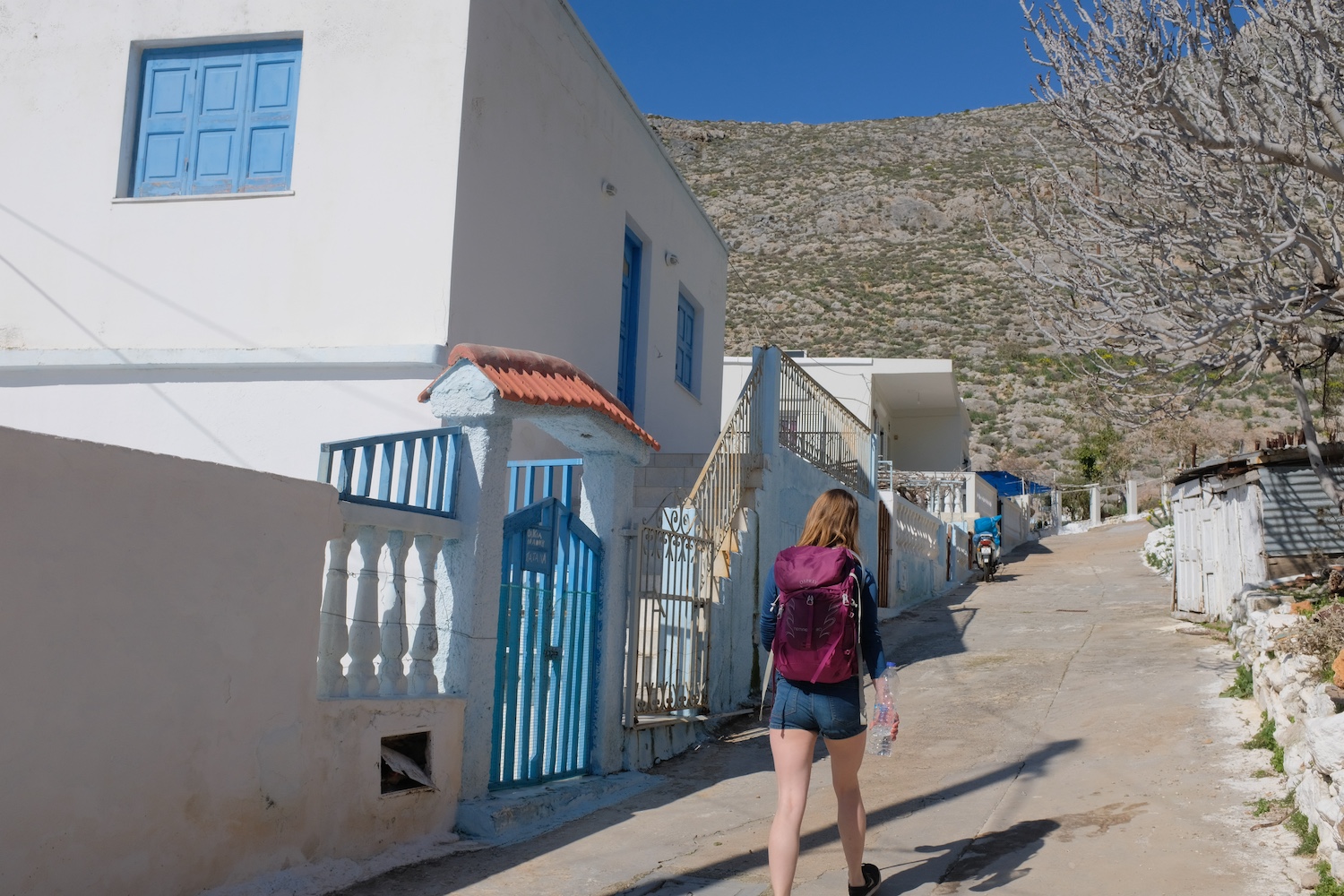
The Aegean island has a long history of trading sea sponges with diving and sailing still very popular today. Since ancient Greek times, Kalymnos has been occupied by the Byzantines, The Venetians and the Ottomans until around 200 years ago. Every year they hold their own festival of independence, the ‘Kalymnian Symposium’. The captivating parades and traditional dances are the local’s way of honouring their heritage and I would advise you to try and time your travel to catch this marvel.
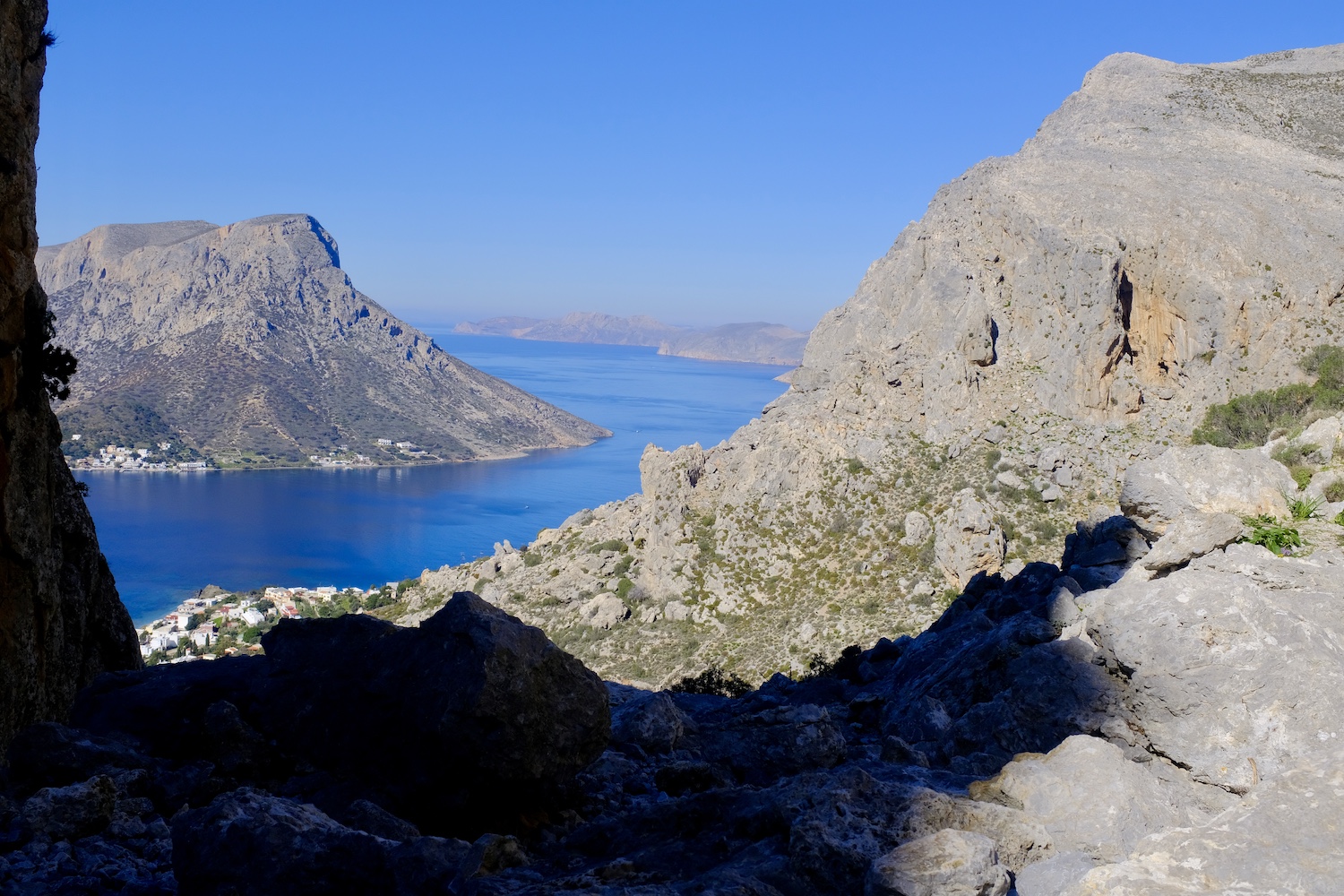
On our way home, we spent a few days in the cultural epicentre of Greece, Athens. My mind and taste buds were blown after a six-course plant-based masterpiece meal from Aleria that was complete with a wine flight. It’s a beautiful city to just wander and explore, especially if you don’t mind meeting feline friends along the way – The local strays have the residents trained well, we didn’t see a single unhealthy or skinny cat during our stay.
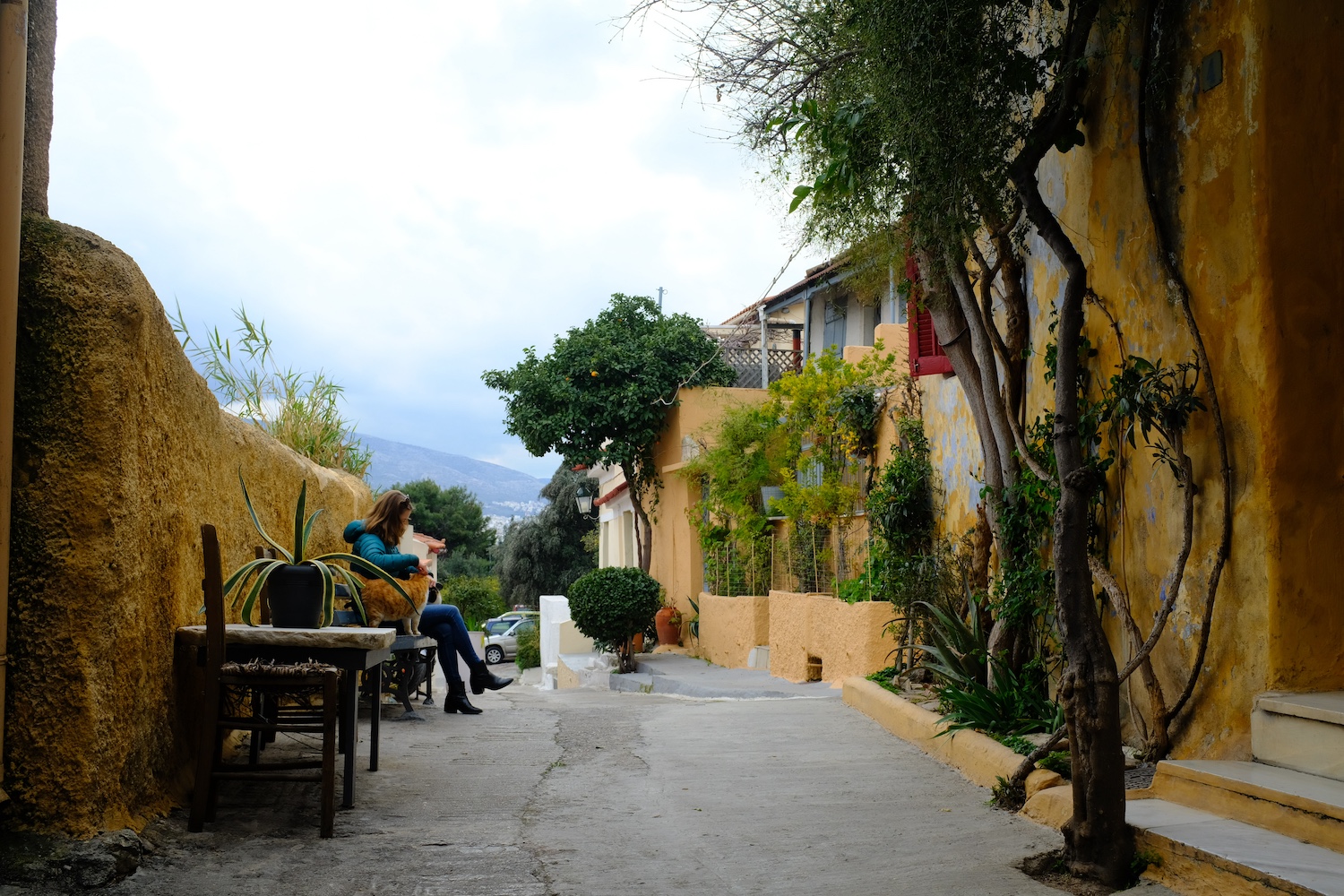
El Chorro in Spain is the number one winter sun climbing destination in Europe. A short flight from Bristol took us to Malaga followed by a one-hour drive to the North through olive groves and orange farms revealing vast limestone faces hundreds of meters high. With over 1500 bolted routes in the area, from accessible single-pitch crags with a grade spread to please everyone, to all-day vertical assault courses, 10+ pitches high for the most hardcore sport climber, Chorro has it all. There are even a few Via Ferratas in the area. Our friend Owen took a break from working in the lighting department on Paddington 3 to relax in the sun-soaked mountains and enjoy litres of blissful Spanish wine. The photo shows him heaving himself across a zipline, dangling 50 meters in the air, ultimately questioning our friendship. He left Spain a week later with somewhat altered DNA, a week rarely goes by when Owen doesn’t go climbing now.
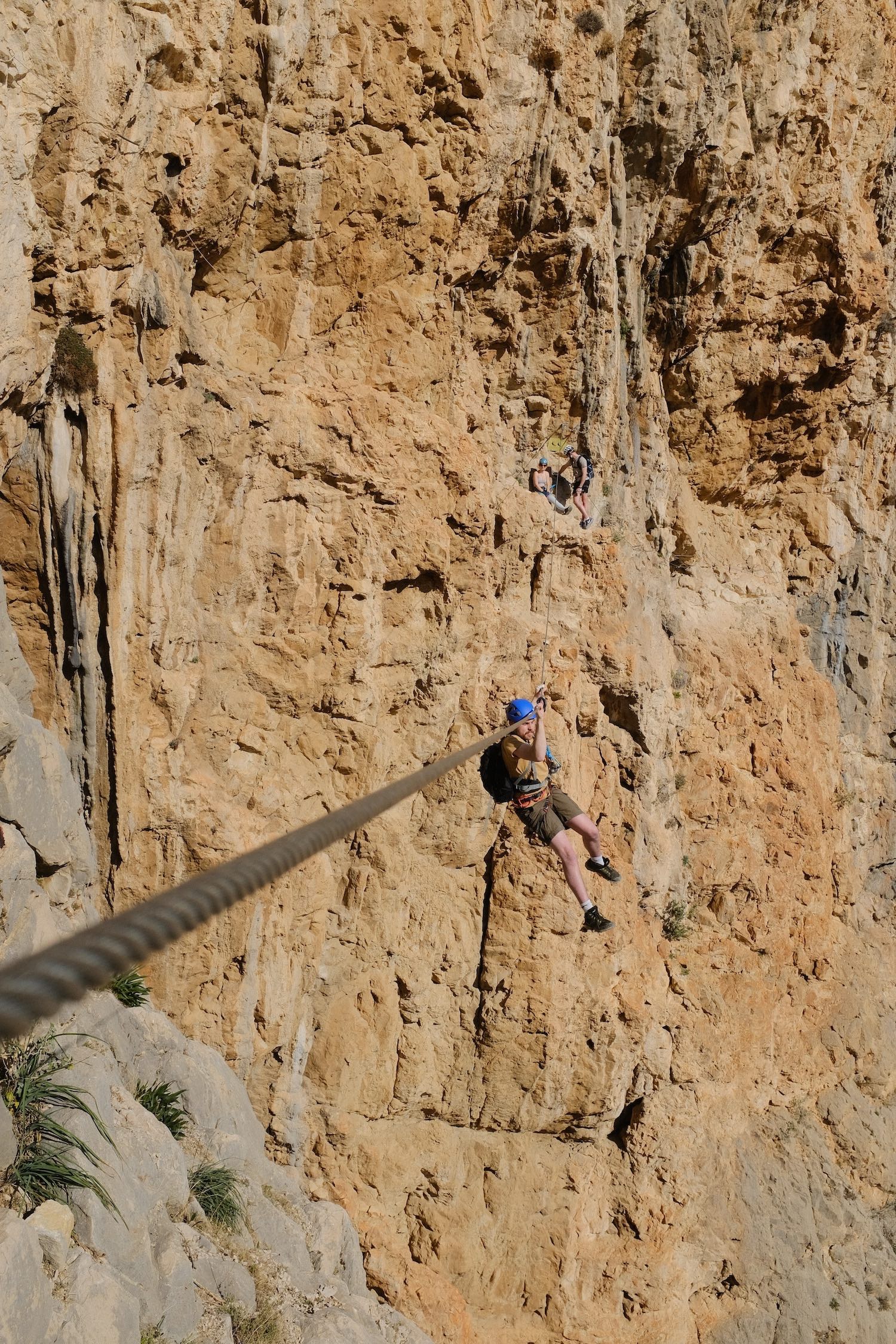
Taking a break from a commercial job in Edmonton, Canada, some of the crew wanted to get out of the flattest, coldest and quite frankly, least interesting part of the country. Hours of driving across the flattest plains that Alberta has to offer rewarded us with the jaw-dropping sights of the frozen Jasper Lake. The cold creeps up on you here though with temperatures dropping to -20 Celsius. You’ll think you have enough layers and that your gloves are thick enough, then 10 minutes later you’ll realise you are cold to the bone. Public service announcement: Wrap up warm please. Standing in the middle of the frozen lake, I have to say I felt very small versus Mother Nature. The ice was so thick you could drive a truck across it with no stress.
Driving back to our hotel that evening, it occurred to me that if we had lost control on the seemingly endless, dark, ice-packed roads, that we’d slip off and into the forest. Likely not seeing another car for hours. This consideration came at comical timing, as minutes later through the dark the beams of our headlights revealed a moose family unhurriedly crossing the road. The adults stood around nine feet tall and would have surely totalled our obnoxiously large SUV. Our Director, Stu, was driving and with calm control, he slowed the car, turned into the skid and let the snow tyres work their magic. We stopped less than 20 feet from the giants, terrified but unharmed. Two hours later, our client for the commercial job phoned to warn us to “watch out for moose on the loose”. Thanks for the advanced warning I guess.
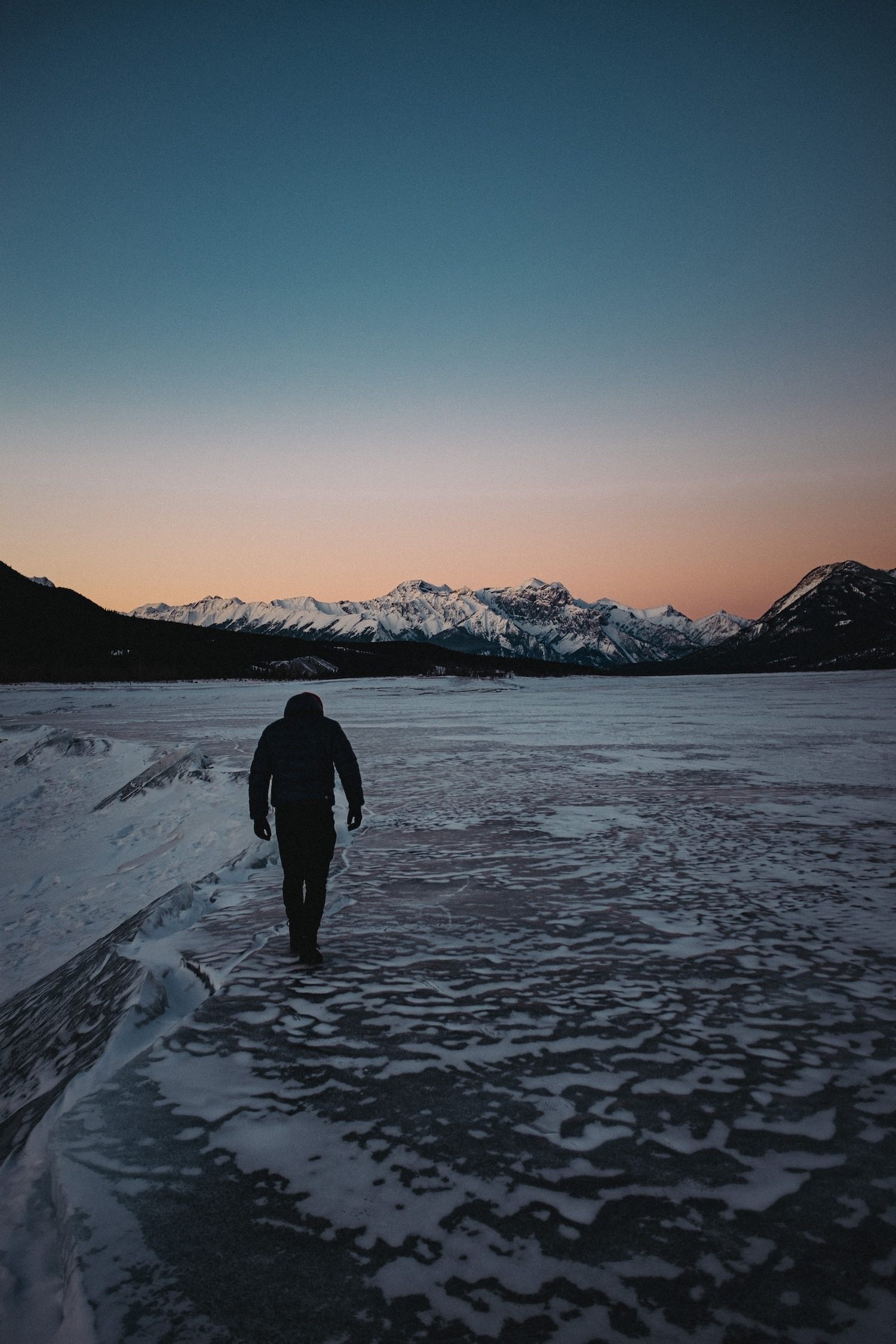
Cyprus has seen decent development in its sport climbing areas over recent years and while its climbing potential is dwarfed by places like Kalymnos, Majorca and Sicily, It’s definitely worth a trip and has lots of rock for future development. Off the beaten track the island has some incredible spots. This stunning gorge made for a beautiful day out, although we learned not to trust Google Maps after nearly following it onto rocky dirt tracks time and time again in our rather pathetically underpowered rental car.
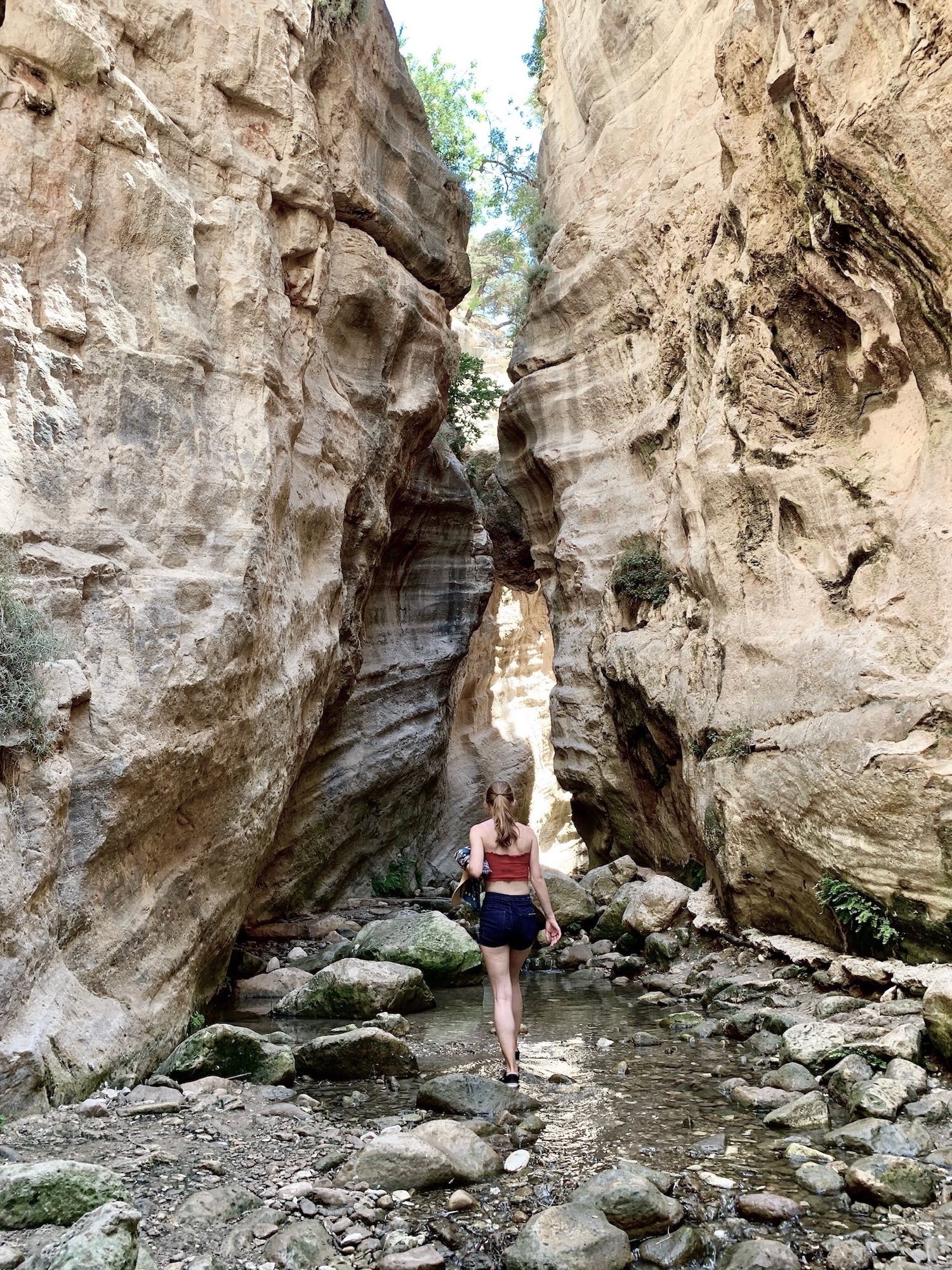
On the edge of Snowdonia National Park in North Wales, not a million miles from Portmeirion, you’ll find the National Slate Museum and Dolbadarn Castle. The Llanberis slate mines provide a thrilling day out for those who don’t wish to shred their fingers climbing the razor-sharp rock faces.
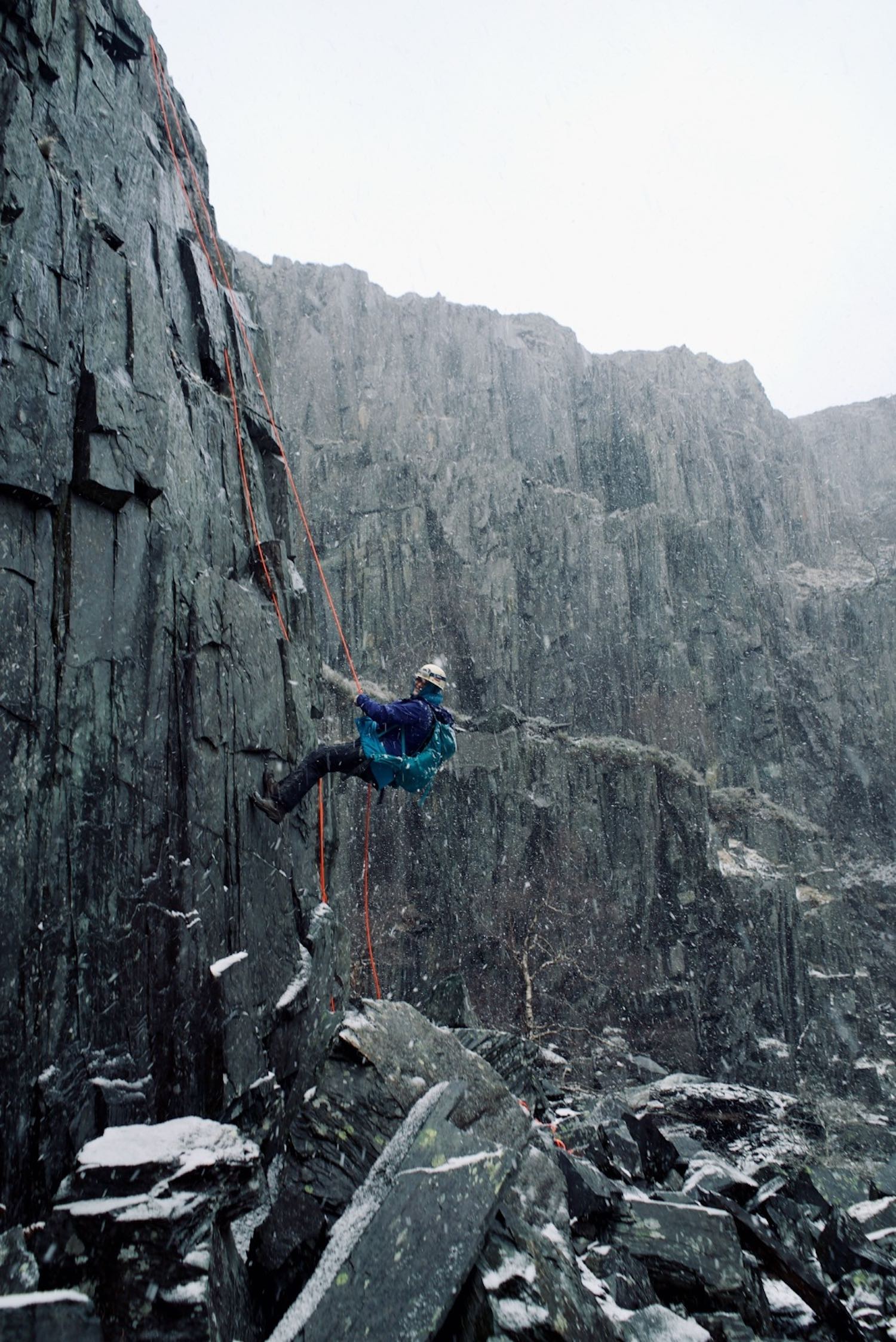
The aptly named ‘Snakes and Ladders’ route follows a series of tunnels, rusting ladders, abseils and vast man-made inclines. All that remains of the infrastructure in the largest quarry on earth is a small ghost town.
If you’re feeling adventurous, you can challenge yourself to climb Snowdon, the highest mountain in Wales at 1,085 meters. You can choose from six different paths, ranging from straightforward to complex, or take the Snowdon Mountain Railway to the summit. Either way, you’ll be rewarded with breathtaking views of the surrounding countryside, lakes, and coast.
If you’re feeling adventurous, you can challenge yourself to climb Snowdon, the highest mountain in Wales at 1,085 meters. You can choose from six different paths, ranging from straightforward to complex, or take the Snowdon Mountain Railway to the summit. Either way, you’ll be rewarded with breathtaking views of the surrounding countryside, lakes, and coast.
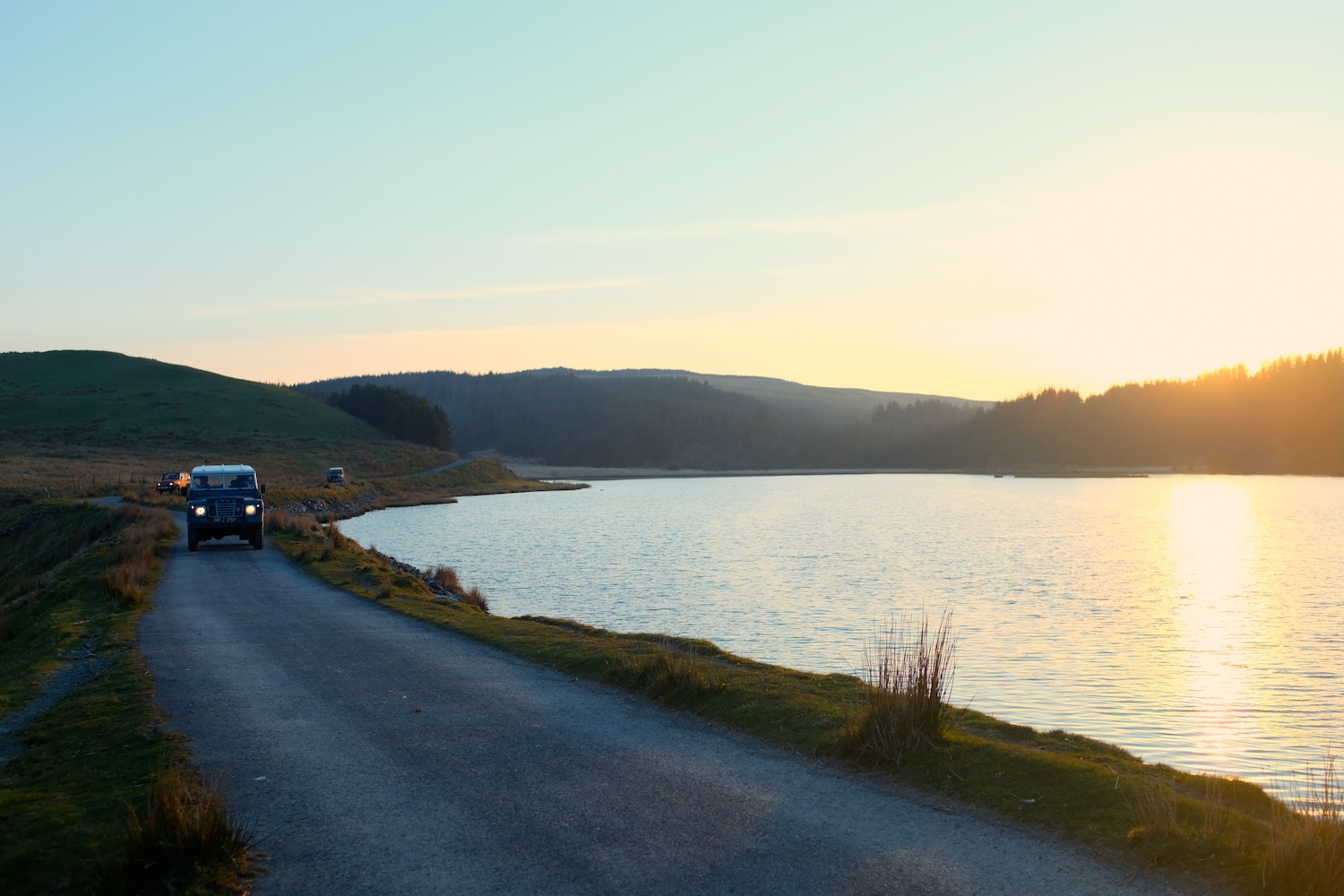
After a day of mid wales green laning nothing beats cracking a cold beer at your wild camping spot. Unadulterated beauty.
Portmeirion is an incredible Italianate village that was designed by architect Sir Clough Williams-Ellis in the style of a Venetian baroque dream. You can wander around the kaleidoscopic buildings, ornamental garden, and statues, and feel like you’re in a genuine fairytale. You can also shop for local crafts, dine at fine restaurants, or stay at one of the elegant hotels or cottages on the estate.
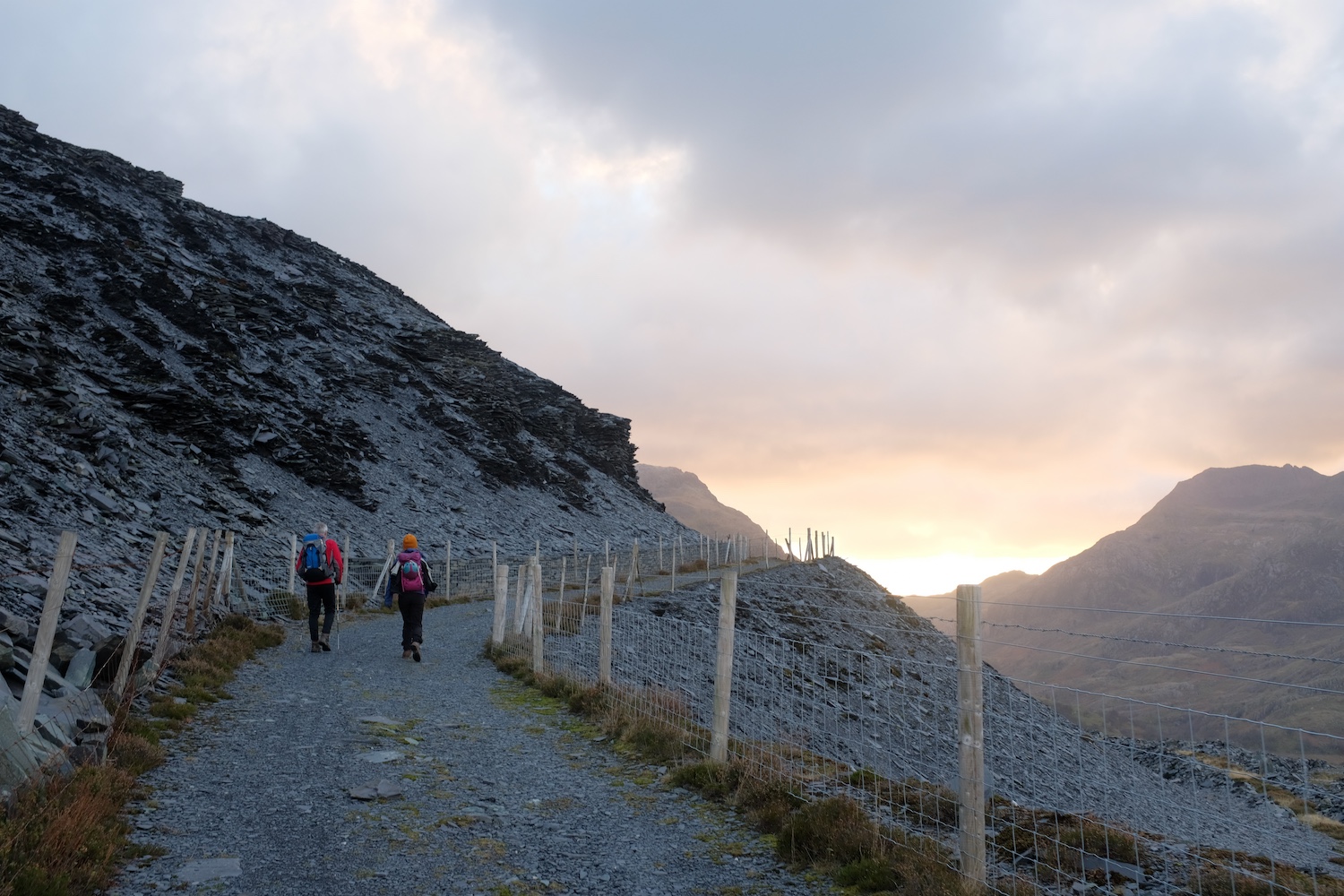
The Footpath into the slate before we don our helmets and harnesses, ready to explore the industrial wasteland retaken by nature.
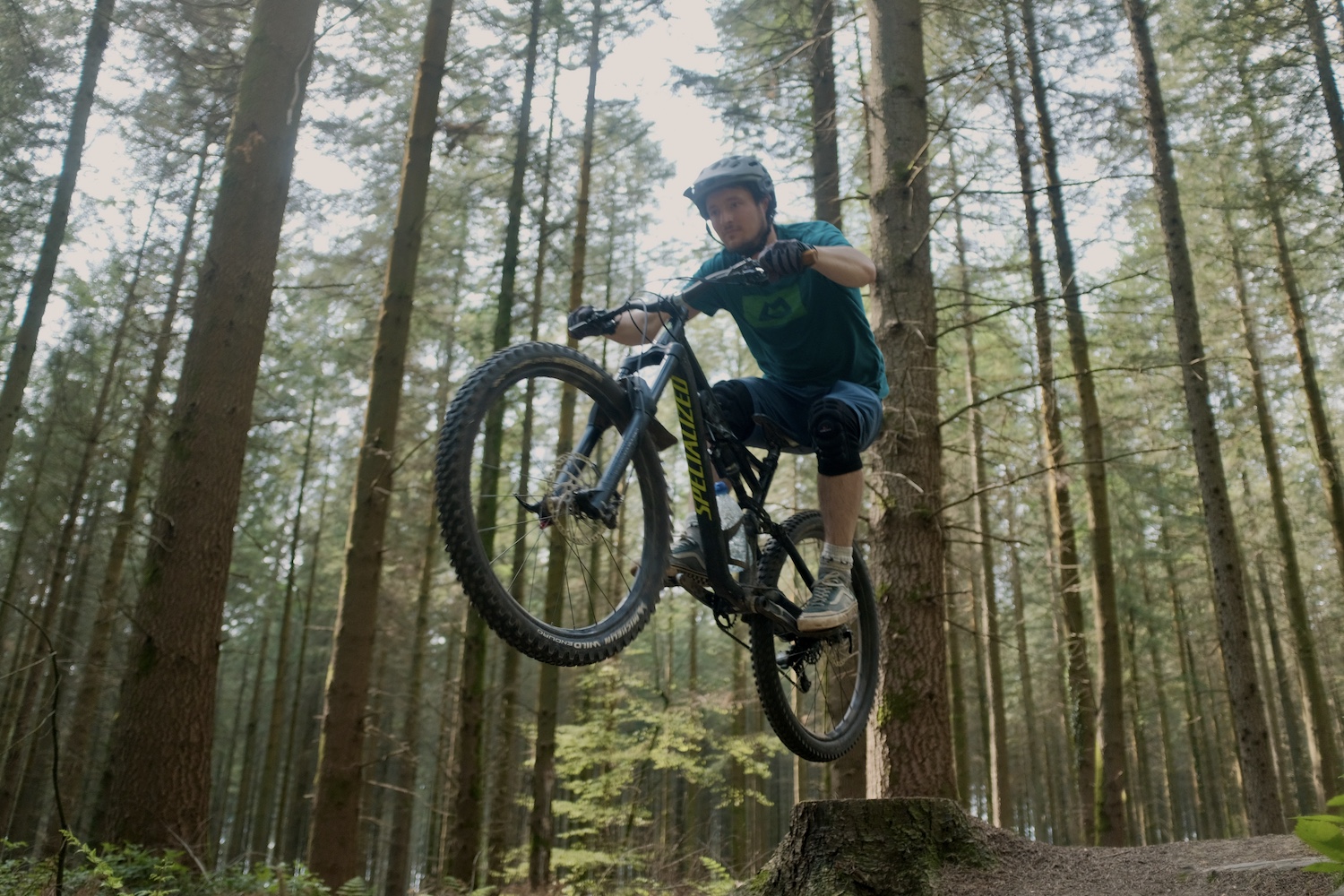
The Forest of dean has it all for Mountain Biking. Pedalabikeaway is the hub for sending perfect flow trails and rough technical tracks, all with the convenience of an uplift service, bike wash and cold draught beer for the end of the day. Speak to some local MTB riders and they will be happy to share some secrets that are literally off the beaten track – the forest is full of hidden gems, tracks made by local enthusiasts. We rode Dowie’s trails, the man himself is a local legend, and has sometimes been sighted wandering the woods with his dog and a shovel, improving the berms and jumps in his spare time. He is said to still hit the trails hard, even late into his retirement.
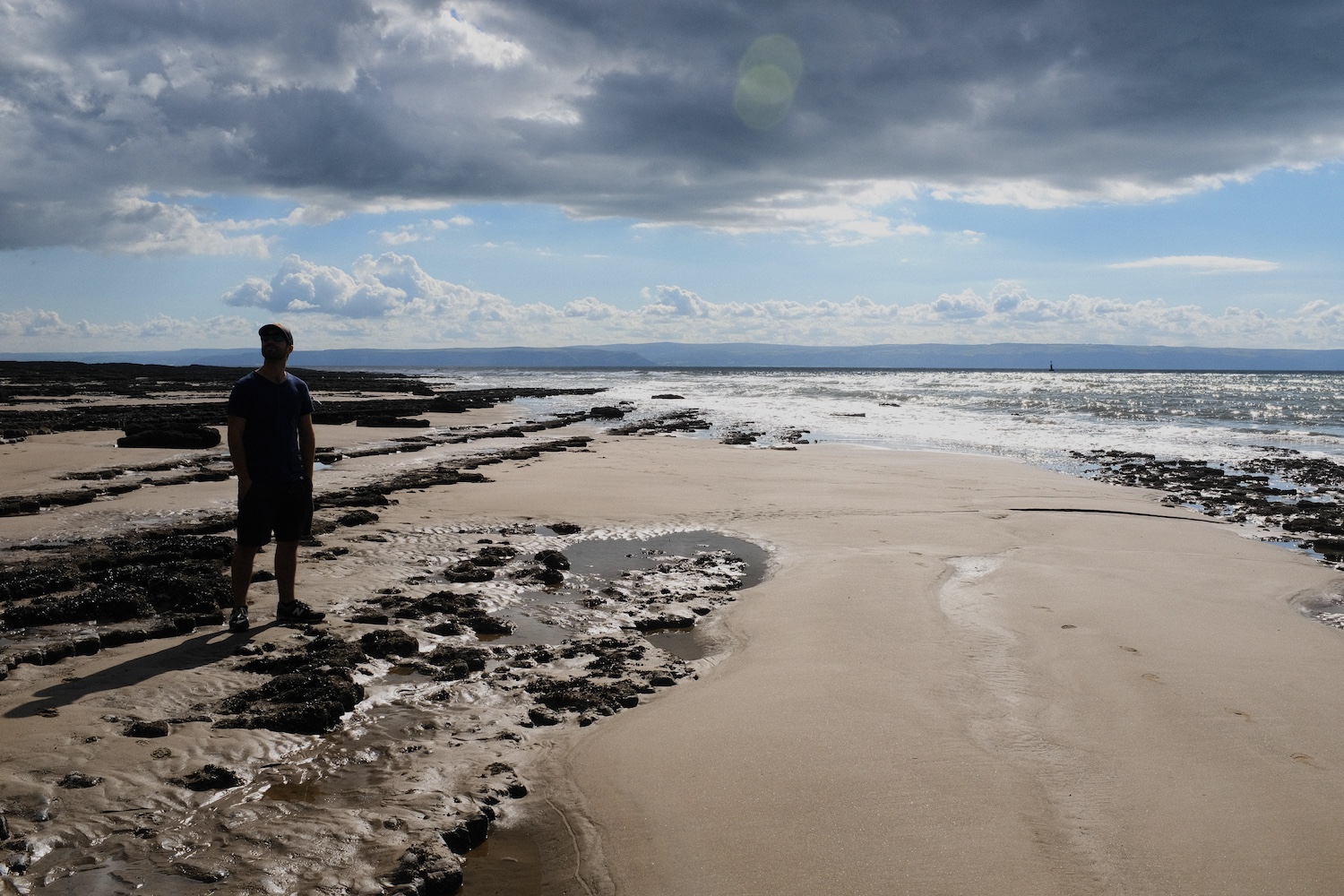
Scoping out some sport climbing on the South Wales coast at low tide. The first few holds never dry out, but they are covered in barnacles so we make do with what we can grip onto. Although these are never the most impressive-looking climbs, every route I’ve ticked off here has rewarded me with some hidden trick, a perfect move, an invisible hold or simply really creative route finding. Not to mention a setting that means you can bring the dog, a BBQ, and a cooler. Might as well get comfy.
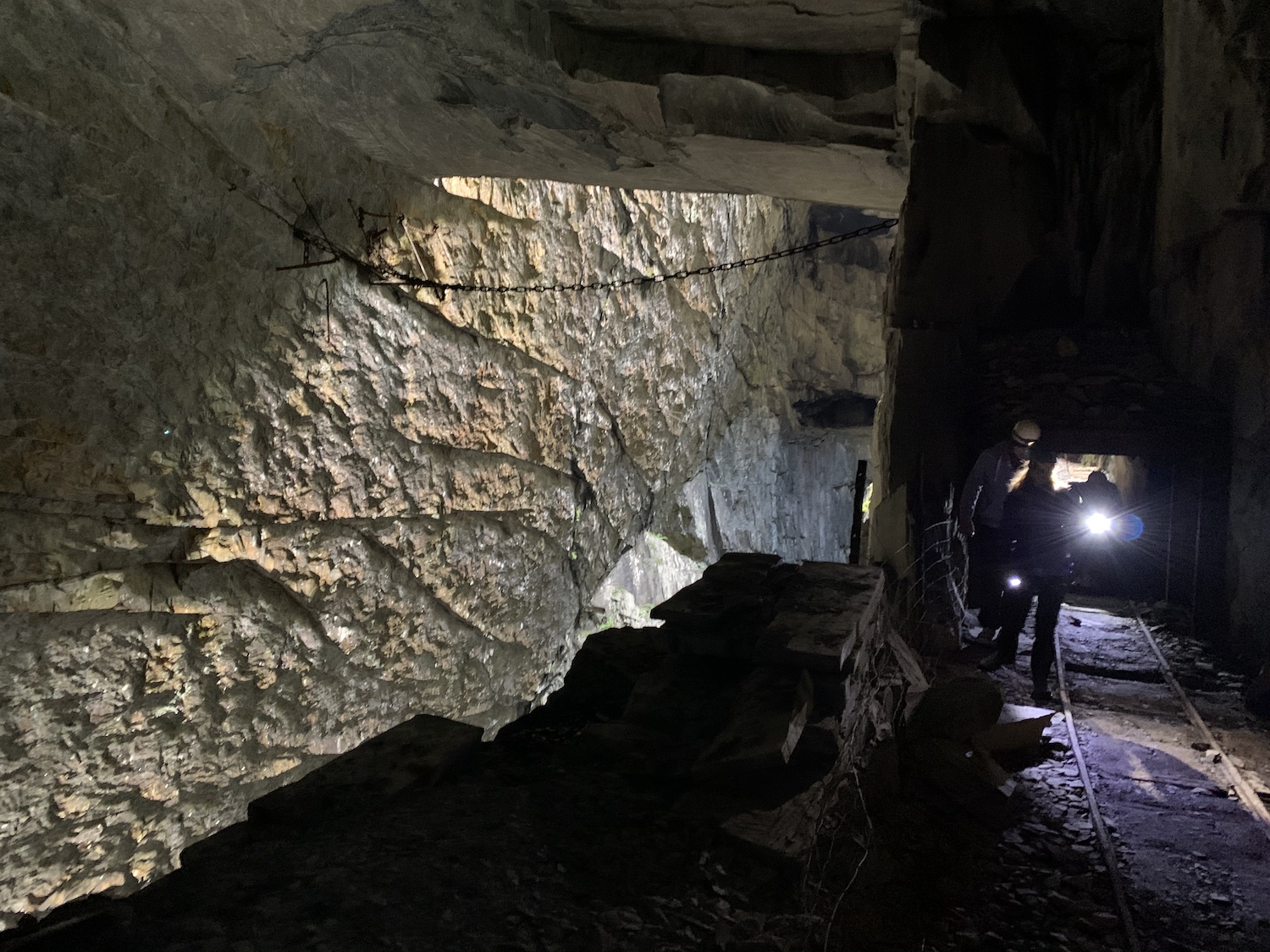
Exploring the depths of Aberllefenni slate mine. The mind-bending scale of these holes in the ground is something to behold. Like many of these abandoned industrial works, it looks as if the workers downed tools and never looked back. Huge crane systems, mine carts and machinery are just left to rust. Descending further using the mostly intact ladders got us to the flood level where we happened across some cave divers checking their oxygen systems. I thought we were brave!
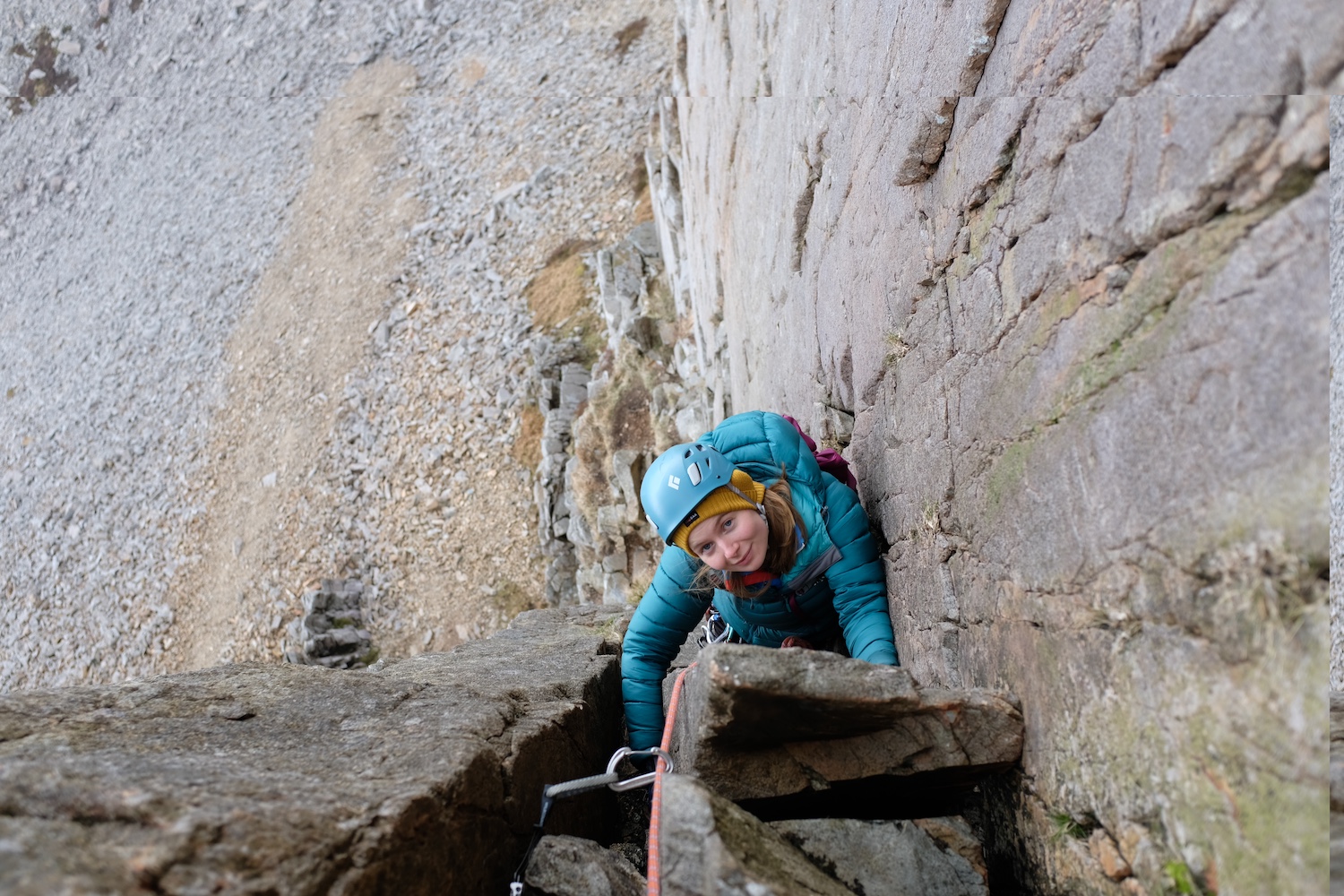
Laura Climbing Table Direct on Cadair Idris, Wales. A lovely easy trad climbing route (until the snow started to fall) with plenty of exposure, followed by an airy grade iii ridge scramble for several hundred meters. A spectacular day out, tainted only by having a wet foot all day after crossing many streams and bogs during the approach.

